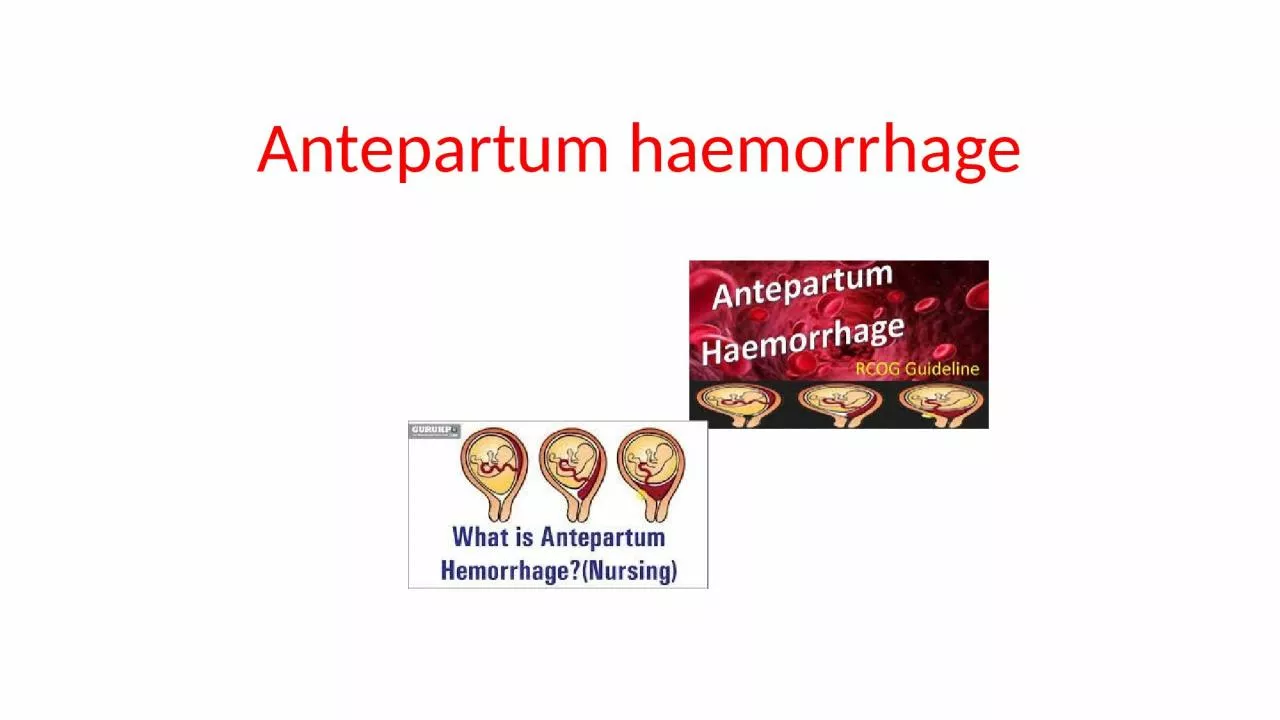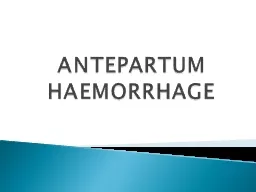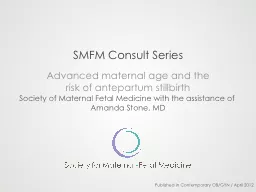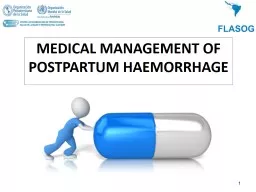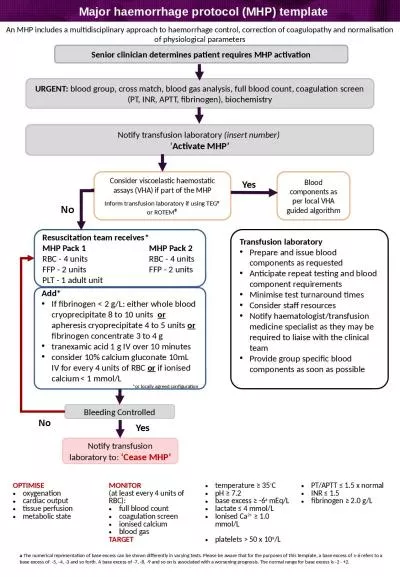PPT-Antepartum haemorrhage ETIOLOGY
Author : emery | Published Date : 2024-02-09
Risk factors are b advancing age of the mother c poor socioeconomic condition d Malnutrition e Smoking vasospasm f Hypertension in pregnancy is the most important
Presentation Embed Code
Download Presentation
Download Presentation The PPT/PDF document "Antepartum haemorrhage ETIOLOGY" is the property of its rightful owner. Permission is granted to download and print the materials on this website for personal, non-commercial use only, and to display it on your personal computer provided you do not modify the materials and that you retain all copyright notices contained in the materials. By downloading content from our website, you accept the terms of this agreement.
Antepartum haemorrhage ETIOLOGY: Transcript
Download Rules Of Document
"Antepartum haemorrhage ETIOLOGY"The content belongs to its owner. You may download and print it for personal use, without modification, and keep all copyright notices. By downloading, you agree to these terms.
Related Documents

